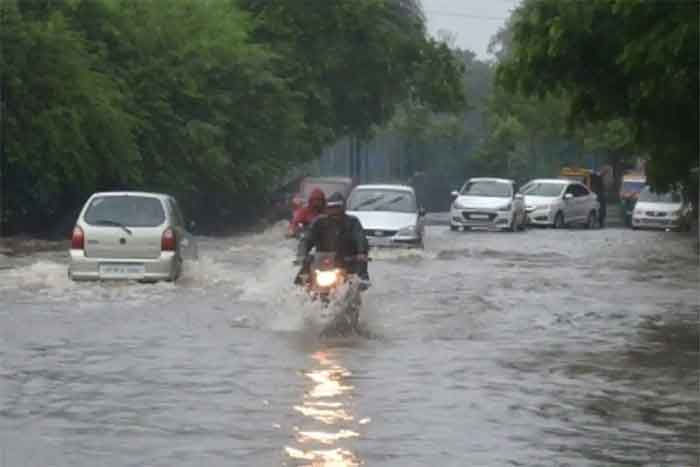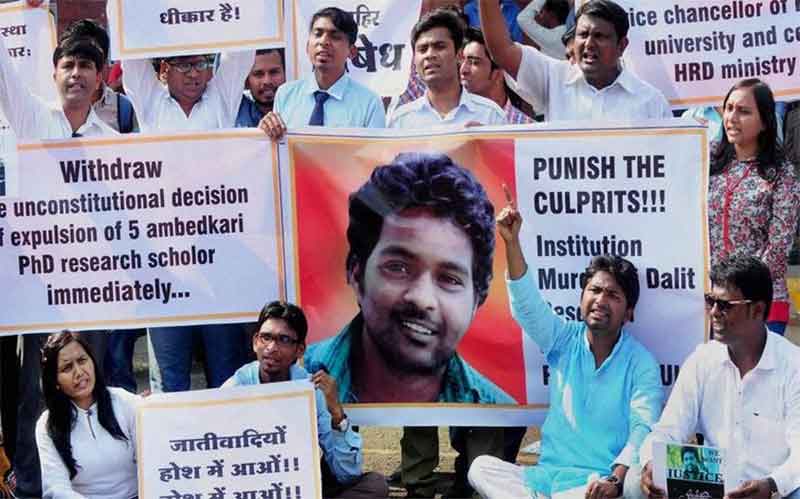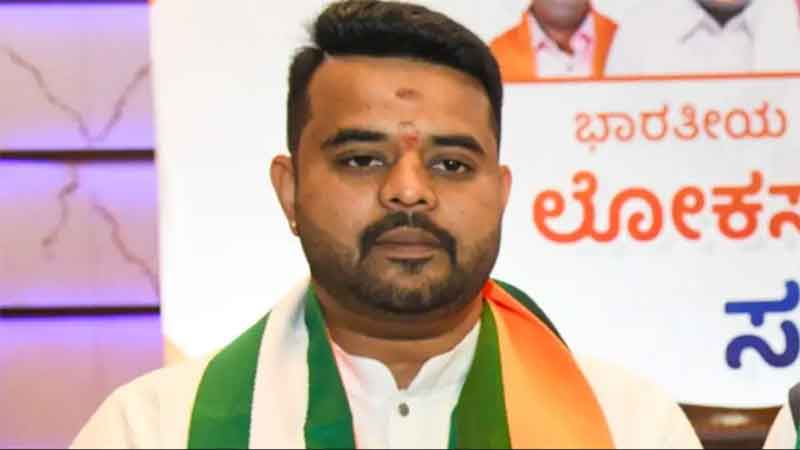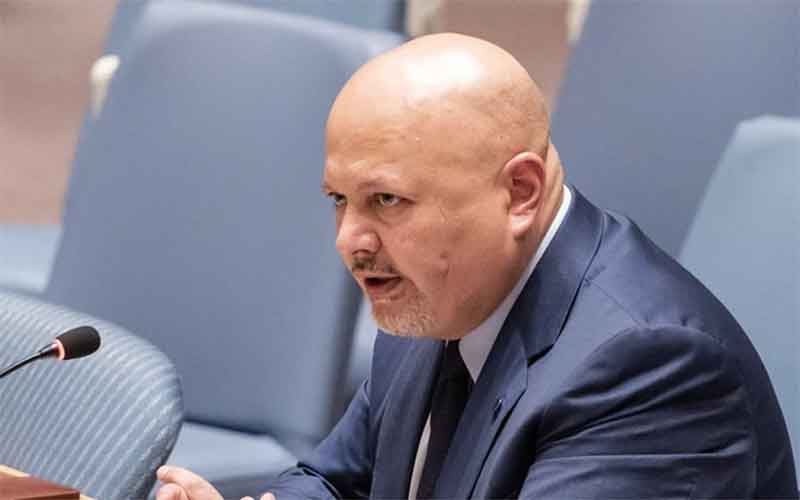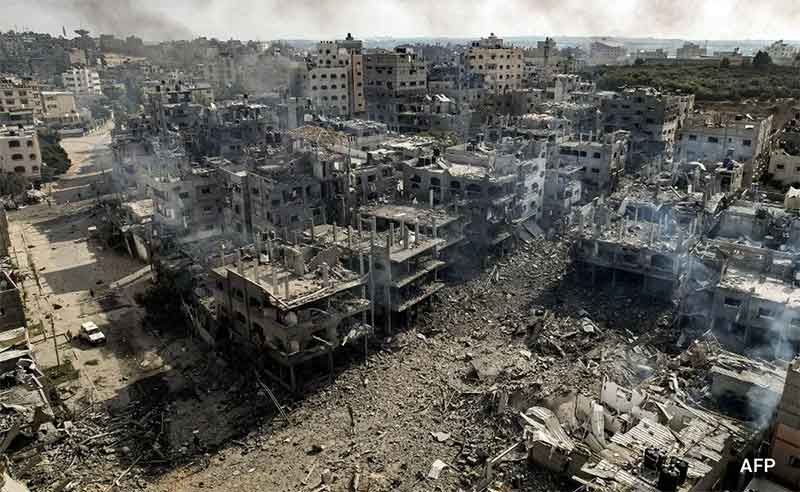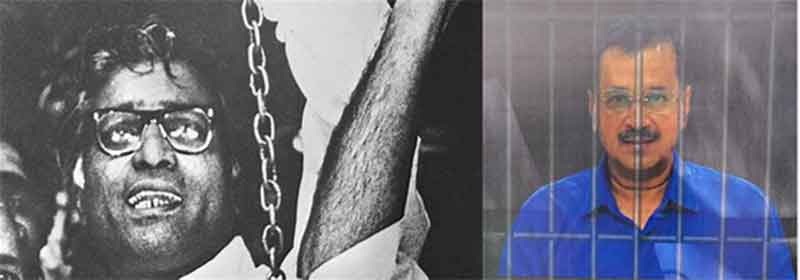
As the social life and businesses of people in Uttar Pradesh gradually recovers from the Covid-19 catastrophe a question on everyone’s minds is – will the pandemic influence the outcome of the oncoming assembly elections in March-April 2022.
To probe this question, on behalf of the Covid Response Watch, we talked to a cross-section of people to get an idea about their perceptions and voting preferences. As the public mood during the elections would be directly related to the state of recovery from the crisis, we also elicited their views on the extent of recovery and the lingering problems.
The broader contours of Covid-19 impact in UP
The health crisis precipitated by the pandemic in Uttar Pradesh is well known: people were dying in thousands due to non-availability of hospital beds, and lack of oxygen and medicines in hospitals. Dead bodies, floating down the Ganges in the hundreds, best captured the severity of the crisis.
There were other dimensions of the crisis too—like job losses due to closures, temporary unemployment due to lockdown, drastic fall in incomes due to loss of work or death of the only earning member and increase in poverty etc.
According to the Periodic Labour Force Survey (PLFS) of NSSO, the urban unemployment in UP was 25.8% in Oct-Dec 2020—after the first wave of the pandemic and before the second wave in 2021 that started at the end of February 2021. In other words, every fourth person in the UP urban labour force was unemployed.
 The latest figure post-second wave is not available yet from the PLFS. However, after a survey of 1.75 lakh households in the country in April 2021, Mahesh Vyas, Managing Director, Centre for Monitoring the Indian Economy, claimed that the Covid second wave would render around 1 crore people jobless in the country. Some media reports estimated that unemployment in UP even touched 40–50% during the second wave. Every other person in the UP workforce was unemployed for a while during the lockdown.
The latest figure post-second wave is not available yet from the PLFS. However, after a survey of 1.75 lakh households in the country in April 2021, Mahesh Vyas, Managing Director, Centre for Monitoring the Indian Economy, claimed that the Covid second wave would render around 1 crore people jobless in the country. Some media reports estimated that unemployment in UP even touched 40–50% during the second wave. Every other person in the UP workforce was unemployed for a while during the lockdown.
The report State of the Working India 2021: One Year of Covid-19, brought out by the Azim Premji University revealed, based on their own surveys, that 230 million Indians had been pushed into poverty by the pandemic. Defining the poverty cut-off as living $2 per day, Pew Research Center estimated a more modest number, of 75 million falling into poverty in India.
They also expected the middle classes—those who live on $10–20 a day—which expanded from 29 million to 87 million between 2011 and 2019, to shrink to 66 million after the pandemic. Despite the gravity of the crisis, some BJP leaders have been quoted as saying that the pandemic is no longer an issue at the polls. The media is also highlighting price rise as the most burning issue during the polls.
The pandemic crisis as experienced at the grassroots
Activist Mohammad Salim, who had contested elections from Mirzapur in 2012 and is also on the governing body of the oldest Masjid of Mirzapur, the Jama Masjid, told Covid Response Watch that he had been working tirelessly to help the people of Mirzapur district during the first and second waves of Covid 19.
What did he think would be the impact of the Covid mismanagement in the 2022 polls in Uttar Pradesh? Says Salim “Since people were left to themselves by the Yogi government, I was receiving frantic calls from people from different parts of the town, and even from nearby villages. They were fighting a life-and-death situation”.
Rameshwar Modanwal, belonging to the Halwai Samaj, and a staunch supporter of the BJP till the second wave, told CRW that his cousin’s CT scan showed his lungs to be seriously infected, but since his RTPCR Test report showed ‘negative’ he was denied a bed in the district hospital. Modanwal’s family is angry with the government for its apathy and says they will not vote for BJP.
“I was calling the helpline number, running helter-skelter from DM to City Magistrate to CMO and to the Doctors, but to no avail. Finally, the patient was admitted to a private hospital, where he succumbed to the virus,” he said.
There will definitely be a long-term negative impact on people’s psyche so far as the management of the pandemic is concerned- particularly in those households where people died due to government apathy.
“I got a call about the falling oxygen level of a woman, who was not even getting crocin tablets from the PHC, which had been shut down. This PHC was 10 km from her hut. No doctor was available in the village, so I told them to bring her to the town which was 30 km away. By the time she reached, it was too late and she died,” says Ramniwas Singh Yadav of Dhunkar village of Madihan Tehsil in Mirzapur district. Yadav is disgusted with the health infrastructure in UP.
“We ran from the village to the District Hospital but most doctors of Mirzapur District hospital had already tested positive and were quarantined. Yet, the DM said he could do nothing” he says.
Again, in Tarqapur village, there were 25 deaths due to Covid-19.
“In the family of Ali Asgar, whose shop I used to visit often, 3 members had died due to lack of oxygen support. The family is devastated. They have decided to pack off the Yogi Government lock-stock-and-barrel”, says a local resident.
But will the BJP supporters still vote for the party?
“Not at all”, says Salim, “because even many like Udai Shankar Verma, who have been hard-core supporters of the ruling party, are disappointed. Udai Shankar is a well-to-do lawyer and had all the political connections but had to bring his wife all the way to Allahabad for treatment, and she died there for lack of proper healthcare.
“There are I lakh 6000 villages in the state, and if we assume that on an average, 5 persons died in every village (this is a conservative estimate), at least 5.3 lakh people would have died in UP due to the pandemic” says Salim.
When CRW asked whether small businesses had recovered to some extent, Salim presented a dismal picture.
“All are still finding it impossible even to limp back to 50% normalcy”, he said. “The big traders are also in debt and are paying heavy interest. This was all because of unplanned lockdowns and an atmosphere of terror all around. When people see no system in place and see pictures of hundreds of funeral pyres or floating dead bodies, the fear psychosis gets multiplied several times”.
According to him in Mirzapur, moneylenders—some of them temple priests—were lending out the money they receive as offerings at 3-4% interest. When the amount is not paid back within the stipulated period, they charge compound interest.
“There is an atmosphere of despair, and this will continue till 2022, unless the government does something on a war footing. These traders, who were among the vocal sections favouring a BJP-led government, are quiet. They will definitely look for an alternative.”
Salim says that since 2014, or even a little before that, middle class people had become self-centered and blind to the problems of even their closest ones.
“We also saw a stark manifestation of this during the CAA-NRC movement and then during the farmers’ movement. A large chunk of middle class voters may still side with Modi, but many are angry with Yogi for other reasons—rising prices, unemployment, rape, violence, corruption, to name a few. So, there will be an almost 3% shift in the vote” says Salim.
Anti-incumbency builds up over the longer run and not due to the opposition propaganda in the formal election campaign alone, he feels.
The mood of the urban trading community and the urban poor
Households of traders constitute one-fourth of the population in urban UP as can be seen from the PLFS 2019–20. As per the 2011 Census, nearly 25% of the urban population in UP lives in slums. Slumdwellers are mostly domestic workers, head-loaders, sand-workers, boat people and fisher folk etc. Both traders and slum dwellers are a major factor during elections.
What is the extent of post-Covid-19 recovery among small traders? In the Rasoolabad market area of Prayagraj, we talked to two traders—Sanjay, owner of Sanjay Brothers, a popular kirana-cum-general store with a large clientele, mostly among middle classes and Jaishankar Yadav, a kirana shop owner with an equally large clientele but almost entirely among the poorer sections.
According to Sanjay, “Covid or no Covid people will have to eat and since we sell basic consumables our sales have fully recovered. Only sellers of consumer durables and electronic gadgets, fashion garments and jewelry were suffering. But during the Dussehra-Eid-Diwali festival season, their sales too recovered to around 70%. But they are yet to make up for loss of business incurred during the peak lockdown period”.
But Sanjay is reluctant to hazard a guess on the impact of the pandemic on the poll outcome. “It is difficult to predict for sure”, he says. Being a Brahmin, he reflects the upper castes’ dilemma—they can’t easily vote for SP, seen as the main opposition but widely perceived as a ‘Yadav party’ and they can’t vote for Yogi again after all the resentment. Many will not go out to vote and some will vote for Congress.
While concurring with Sanjay that the impact on election results could not be judged by this single issue alone, Jaishankar Yadav asserts that normalcy has not been restored in his business.
He says, “Earlier, I used to sell 3 to 4 quintals of Ashirwad atta per day but now I am barely able to sell even 1 quintal. People who used to purchase this better quality atta in the open market are now queuing up before the ration shops to get free atta of slightly inferior quality in bags with Modi’s pictures on them. Keeping elections in mind, this free supply of food grains which was supposed to end in November has been extended by 3 months. Even for other products, my sales are still down by 50%. People have no money to buy many things. They still restrict themselves to bare essentials.”
Commenting on the state of the marginalized sections Yadav says that many children have dropped out from schools as they are unable to pay the fees and there is no construction work or other informal work available. Due to the bad experience during the lockdown, many people have stopped going out of town for work. Only now some have started stirring out. Anger is swelling among people.
“But when it comes to voting they will decide going by the caste of the candidate. Among the poor though, Akhilesh, from the Samajwadi Party is gaining traction as the main alternative, even among some sections who had voted for Mayawati’s BSP”, he says.
A butcher, who used to do brisk business before the pandemic, with his shop, Royal Mutton Shop, located near the Teliarganj Mosque in Prayagraj, told CRW, “Despite the ongoing marriage season, the sale of mutton is down by 40–50%. Earlier, I had employed a boy exclusively to skin and cut the ‘bakri’ (goat) as we used to sell mutton from 25–30 goats easily but now I have sent him away, since selling meat from even five goats is difficult. People don’t have extra cash now. (i.e., disposable income—Ed.) Mutton, at Rs.650 a kg, has become a luxury item now. I think this will surely have a negative impact against the BJP in the polls, but how much I can’t predict now.”
Tej Khan, a neighbouring grocer, concurs, “Whatever people earn they are spending on doctors as now dengue and malaria have followed Coronavirus. Certainly, people are disillusioned with the government and this will show in the 2022 polls.”
Ramesh Gupta is a brass trader from Moradabad, who had voted for BJP at the centre as well as the state. He told CRW, “I have taken loans because many of my goods are lying unsold, yet I have to pay for all the orders I had placed. After Diwali I can say there is only 50 % revival of my business. I also used to export goods, but that has totally stopped, as no orders are coming.”
Talking about the mood of the people of this town, Gupta says, “Thousands died in Western UP. Now people have become quite wise and won’t vote without thinking. There was a Modi wave last two times. But this time even people like us are struggling to survive. The kisan andolan (farmers’ movement) will also have a serious impact on the poll outcomes in Western UP. I don’t think things are going to be smooth for the ruling dispensation. They will lose many seats.”
Changing political preferences in rural UP
Ramnaresh is a small peasant from Pratapgarh district—the hometown of former Congress Minister of Foreign Affairs, Raja Dinesh Singh and the notorious don Raja Bhaiyya.
According to Ram Naresh, “The impact of mismanagement during Covid second wave has waned. Most poor people think the mahamaari was God’s wrath, so one can’t blame the government much. Moreover, food grains were distributed to help. But price rise is the real issue. Mainly, diesel, petrol and fertilizer prices as well as that of essential commodities like oil, vegetables and daal. Transport is costlier now and another major issue is a large number of stray cattle destroying crops. This is due to the Yogi government banning cattle purchase and sale as well as cow slaughter. Peasants are having to sleep in the fields all night to save crops from multiplying stray cattle.”
According to Ram Naresh, Yogi raj will end in 2022 as 70% people are against it. That is the mood in Pratapgarh.
Rajjan Kol, Panchayat chief from village Sehuda of Bara Block of Prayagraj has a different story to tell. (Kols are not counted as Adivasis in UP. They come under SC category.) He says that the poor and small peasant families don’t have enough for two meals a day.
“The Yogi government provides only 10 kilos of foodgrain. But a villager, who works all day needs at least ½ kg. food grains per day, including daal and vegetables. Mustard oil is also used by all. Can we buy it for Rs.190-200/litre? In our village, neither MNREGA work nor stone cutting in the hills is going on now. People are sitting at home. Those who were working in Delhi and Bombay are returning, but they are unsure of their future. This is the most burning issue. We have not recovered from the pandemic impact; so, there will be a 30% shift from BJP vote share this time,” he says.
Raju Kushwaha, a pump operator from Sehuda concurs. He says Covid-19 has gone but people’s lives are not back to normal. Unemployment after the lockdown is the main issue for us.
Two pre-poll surveys—one by C-Voter-ABP News and the other by Times Now-Polstrat have predicted that Yogi would scrape through despite loss of 100 seats. From now to the polls, if there is further erosion and greater traction for SP, many predict there might well be a hung assembly in UP.
Sundaram is a researcher based in Allahabad.

